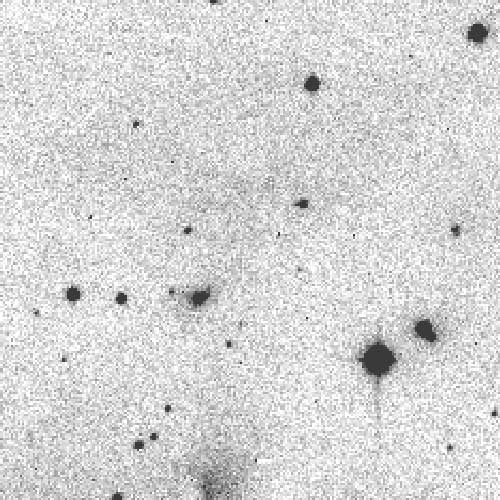

This is the red image.
You may also see images at other wavelengths by clicking on the colorbar at a point above any of the dashed arrows (which point to other regions of the spectrum at which images are available). The solid arrow shows the spectral region you are seeing now. This is not intended to be a linear scale in wavelength, but only a rough guide to the wavelength of the observation.
This heavily embedded cluster in the L1641 North region is the location of a powerful molecular outflow (Fukui et al. 1986). The existence of the group was discovered by Strom, Margulis and Strom (1989). It was further studied photometrically by Chen et al. (1993). An infrared spectroscopic study was done by Hodapp & Deane (1993). This group is extremely young as shown by the luminosity function (Strom, Strom & Merrill (1993) and the HR diagram (Allen, Strom & Strom (in preparation). Many of the stars in this cluster suffer enormous extinctions (>30 magnitude). Few are seen in the visible.
This image was made with an optical CCD with a broad band filter centered at a wavelength near 6500 Å. While the images are not exactly aligned, you can easily see how many fewer stars are visible at this wavelength by tracing the obvious stellar patterns.
If you wish more information about these images, a page is available for your perusal. You may also return to the overview page.
References
Chen, H., Tokunaga, A.T., Strom, K.M. & Hodapp, K.-W. 1993, ApJ, 407, 639
Fukui,Y. et al. 1986, ApJ Letters, 311, L85
Hodapp, K.-W. & Deane, J. 1993, ApJ Suppl,
Strom, K.M., Margulis, M. & Strom, S.E. 1989, ApJ Letters, 346, L33
Strom, K.M., Strom, S.E. & Merrill, K.M. 1993, ApJ, 412, 233
www@hanksville.org
© 2000